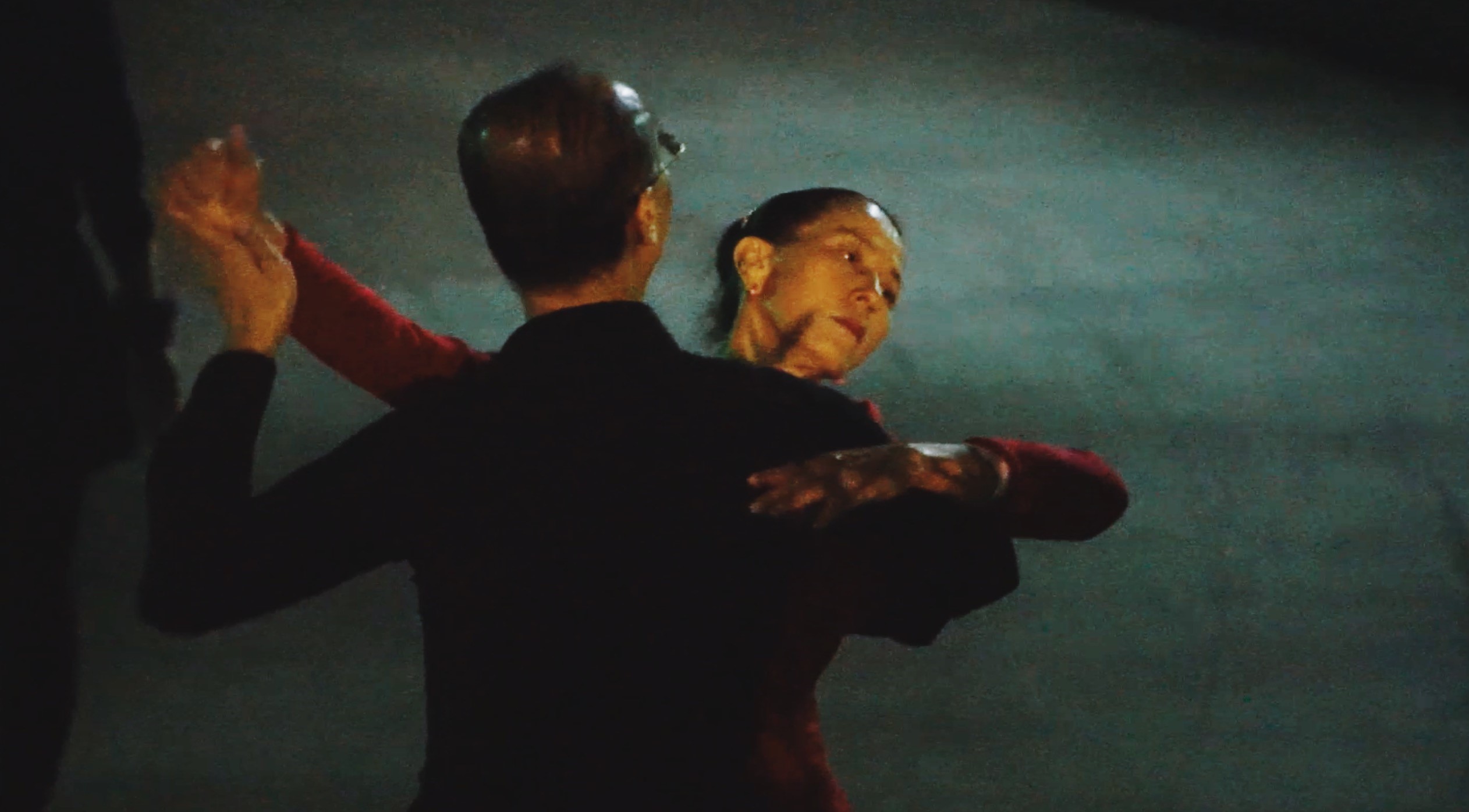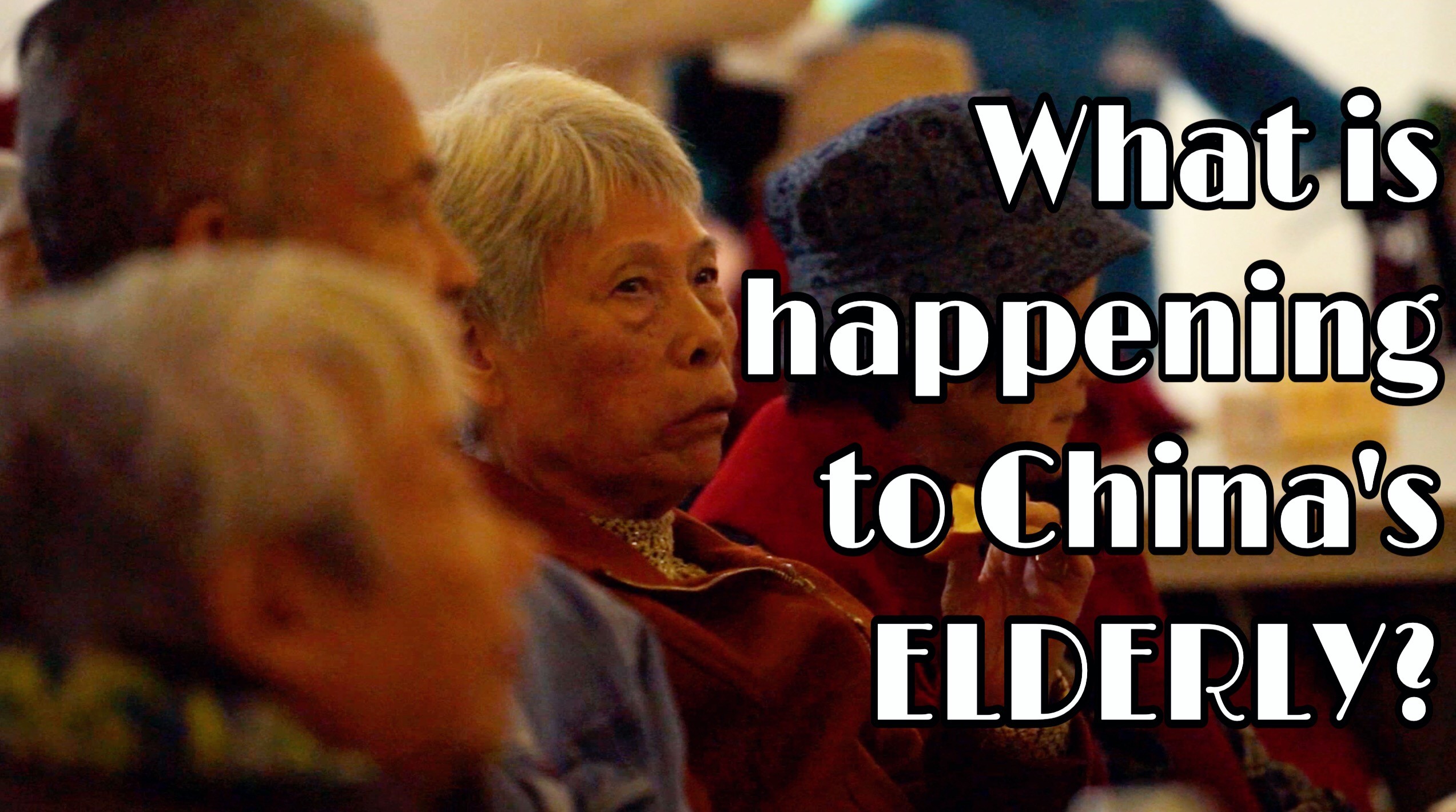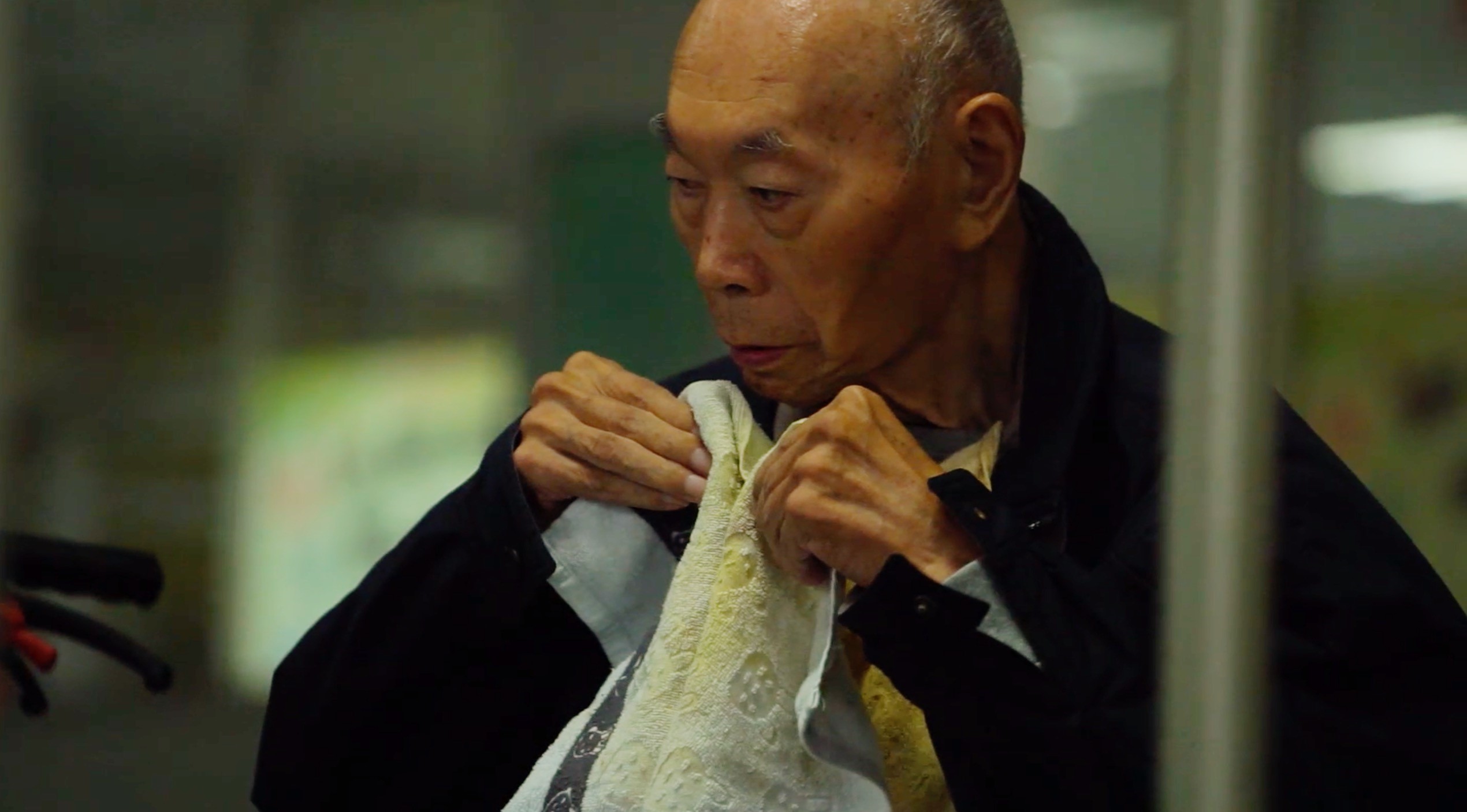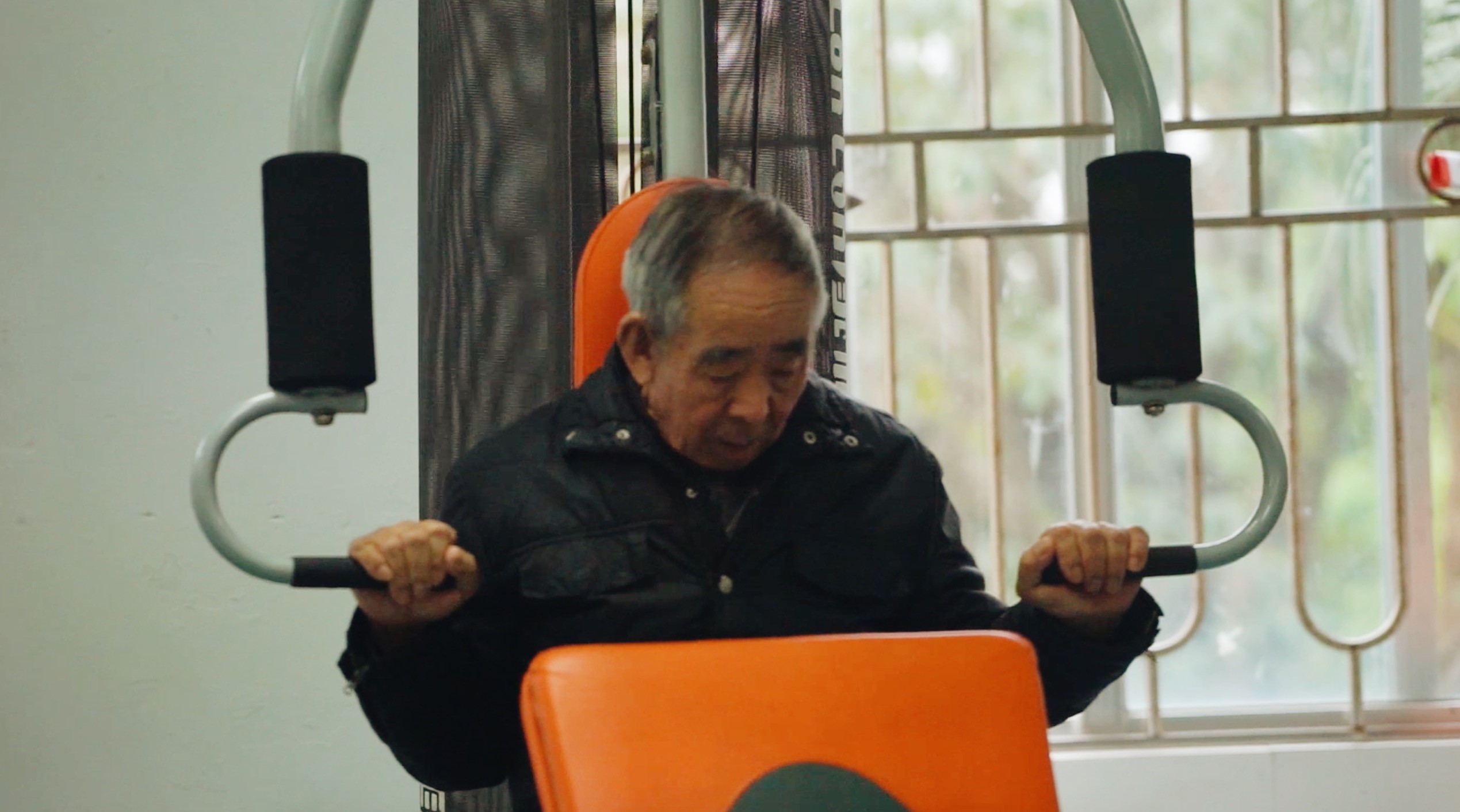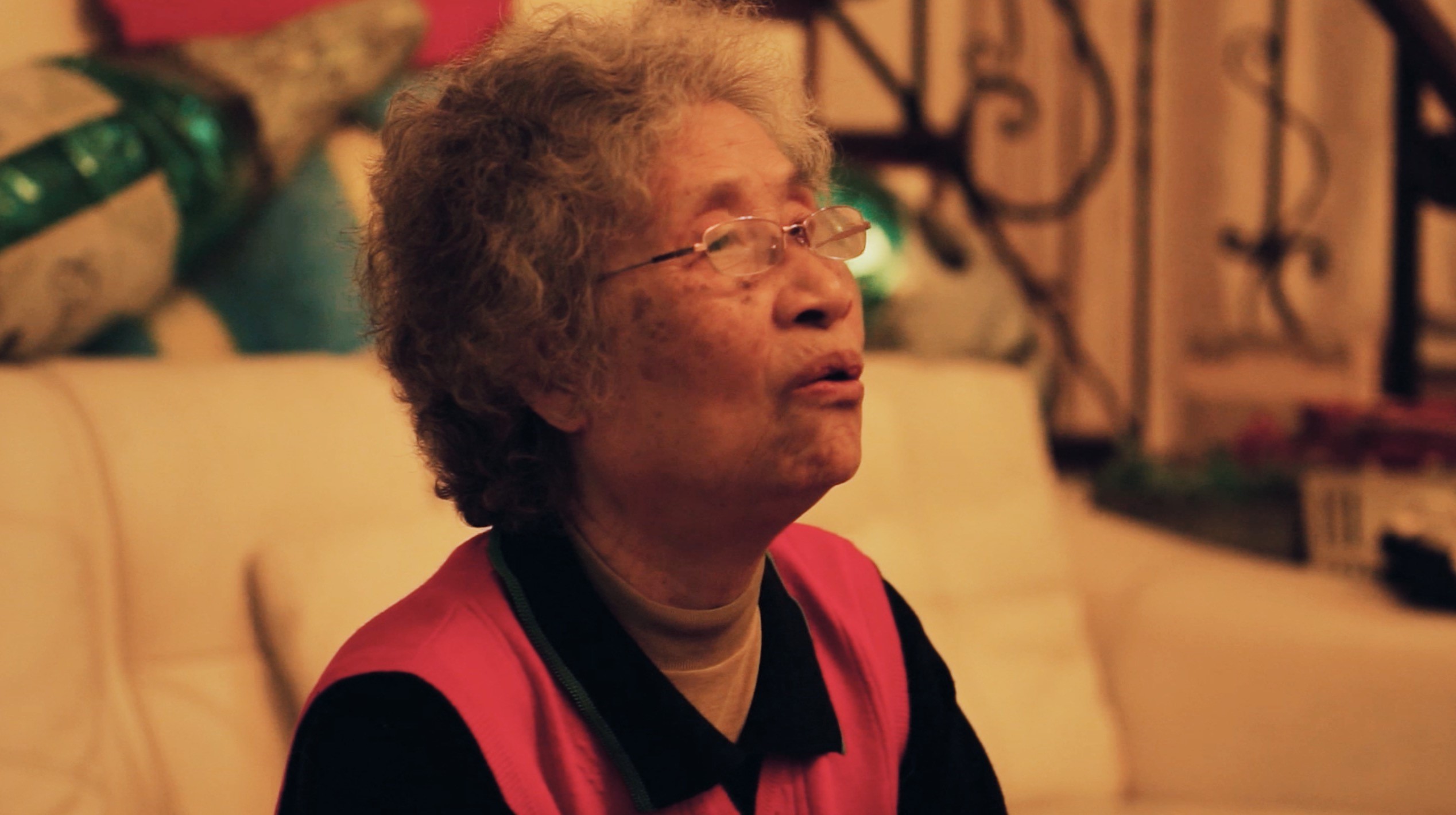Day 0
On Tuesday at 5:30 PM, everyone gathered at the south gate of the school to do the final check before departure, and then took the bus together to Hong Kong International Airport. Board a plane from Hong Kong to Istanbul, about twelve hours away; And then a flight to Belgrade; Finally, at 8:10 local time on Wednesday, we arrived at the destination of this field trip. From the sunset glow to the fall of the night, to the dawn of the sun; Our time trip will also start at Belgrade Nikola Tesla Airport.
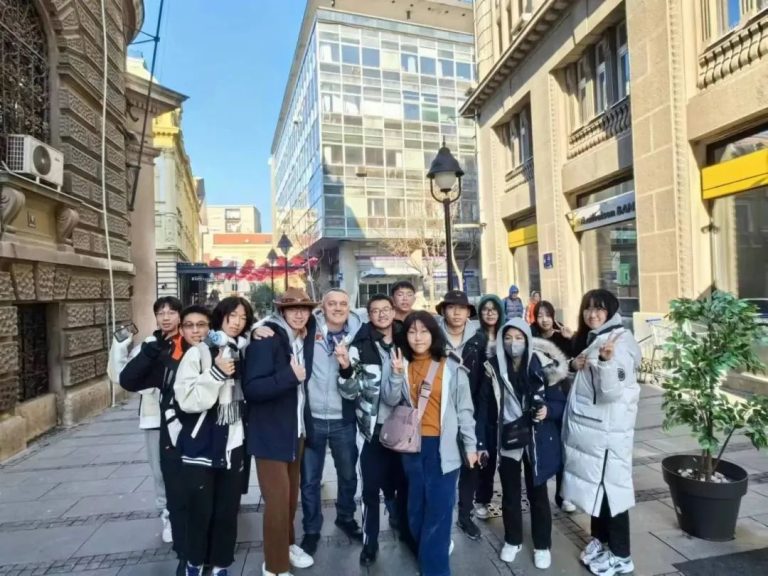
Day 1
We first took the minibus to the Capital Hotel to check in; After putting the luggage and repairing, we walked out of the hotel gate, we felt the weather of Belgrade low to about 0 degrees, the January sun is as fragile as the title page, some cold, some gloomy; People were walking in a hurry in the street. Our hotel is located in the pedestrian area of central Belgrade, so Mr.Popovic took us on a brief tour of the area. We wrap up our thick down jackets and embark on our Journey of Adventure to this unknown land.
“Cash is the King” – Alex, so, although there are various bank cards, but the first thing is to exchange a little local currency.
In the afternoon, we went to the Belgrade National Bank to see the history of Serbian coins for nearly 100 years.
With the explanation of Teacher Popovic and two staff members, Serbia’s monetary history, like a long scroll of time, unfolds before us; It Chronicles the rise and fall of nations. From medieval dinar gold and silver coins to modern banknotes and coins, each coin carries a unique cultural imprint and historical story. They are not only instruments of trade, but also witnesses to Serbia’s long history and rich culture.
In the evening, it was time for free activities. My friends and I went for a walk in the walking area and personally felt the unique charm and cultural atmosphere of Serbia. On both sides of the street, the old buildings are bathed in the golden sunset, which is particularly solemn and warm. Street artists play melodious folk music with a strong Balkan flavor that makes people feel like they have traveled to another time and space.
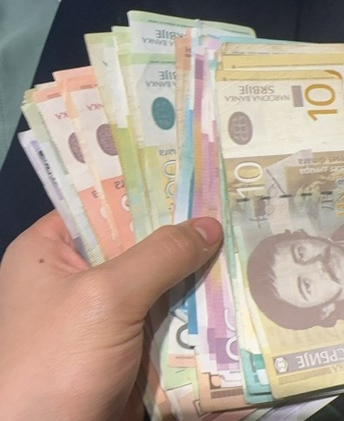
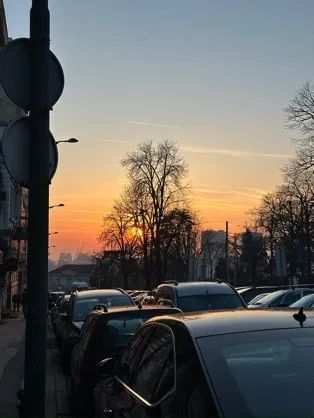
Day 2
After breakfast, we set off to explore the historical trajectory of Serbia’s socialist transition to a market economy. This change is mainly reflected in the restructuring of the economic structure, especially the change from public ownership to privatization. Our tour included visits to two local private companies, a medium-sized machinery manufacturer and a small high-tech startup, as well as a Chinese Taipei-based auto parts processing plant in Serbia.
This visit allowed us not only to witness the dramatic changes in the structure of the Serbian economy, but also to understand the reasons behind these changes. Serbia experienced political turmoil and economic difficulties in the late 20th century, which prompted the country to undertake a series of economic reforms, including encouraging privatization and attracting foreign investment. Through these measures, Serbia hopes to activate the market, create more jobs and accelerate economic growth.
During the visit, we can not only see the modern equipment and efficient production lines of these factories, but also hear the first-hand testimony and personal experiences of the business owners about the economic and social transformation over the past decades. Especially in the auto parts factory in Chinese Taipei, we can also observe the important role of international cooperation in Serbia’s economic transformation.
During our free time in the evening, my friend and I decided to head to the Danube River, curious about the night scene in Belgrade. To get there faster, we first chose to take a taxi. In the taxi, we felt the bustle and energy of Belgrade as the capital of Serbia. The driver skillfully navigated the streets of the city, allowing us to observe the city at night up close, while also experiencing the warmth and friendliness of the locals.
Arriving at the Danube, we were immersed in the peace and beauty of the river. The stars in the night sky and the reflection of the river glow together, creating a dreamlike scene. We walked along the river and felt the unique history and culture of the city.
On our way back, we opted to take the bus to get a deeper experience of local public transport. Serbia has invested a lot of improvements and upgrades in its public transport system in recent years. The buses are punctual and efficient, and the interior is clean and tidy, showing Serbia’s efforts to improve public services in the city. The bus shuttles through the night, giving us the opportunity to enjoy the night scene of the city from a different Angle, while also feeling the convenience and comfort of public transport in Serbia.
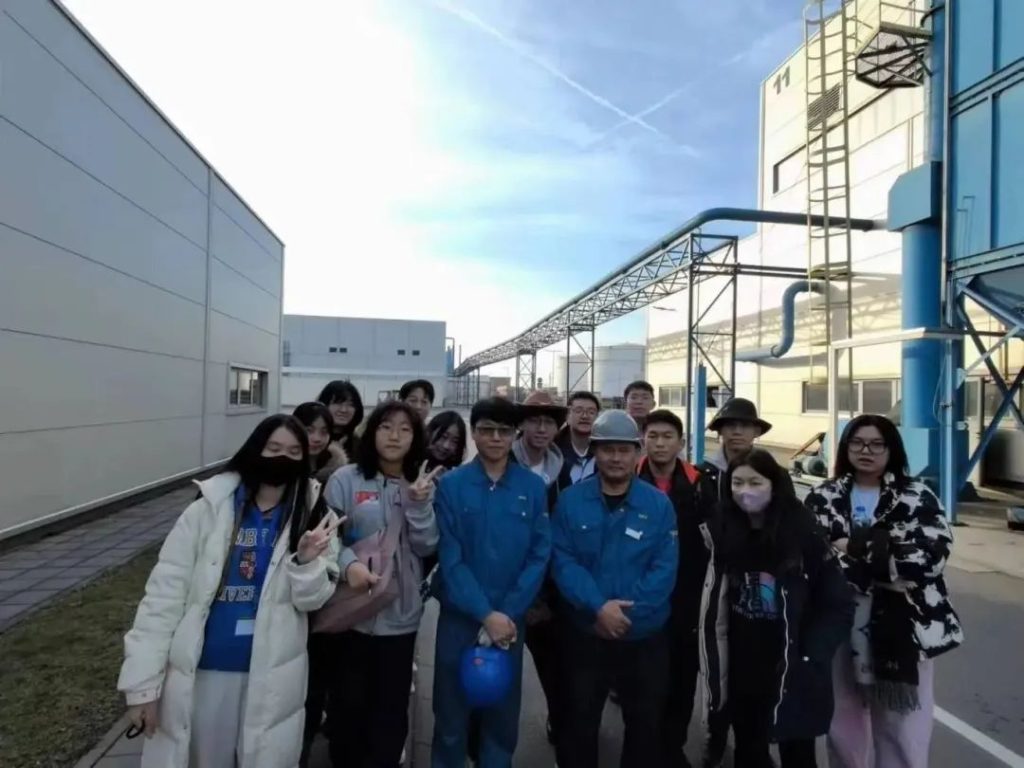
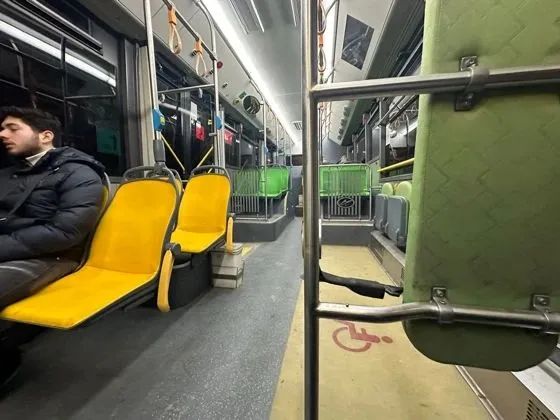
Day 3 Vrsac
Today, our journey takes us to the border city of Ferschac in northeastern Serbia. The city is not only geographically unique, but also culturally rich, making it a fascinating destination to explore.
Our first stop is the National Flight Academy, an important base for training future pilots. Here, we had the privilege of experiencing an advanced flight simulator that made us feel like we were in a real cockpit. The simulator experience is not only exciting, but also adds to our understanding of flight technology. In addition, the face-to-face communication with the flight instructor gave us a deeper understanding of the flying profession. Their experiences and insights shed new light on the art and science of flight.
We then had lunch at a century-old winery. This is not only a culinary journey, but also a cultural experience. We tasted authentic Serbian cuisine and selected wines, which were not only evocative, but also reflected the local food culture and winemaking traditions.
After lunch, we came to an old castle on the top of a hill. Standing high up in the castle, we were deeply attracted by the view before us. The castle not only has a long history, but also shows the charm of ancient Serbian architecture. From this high point, we can overlook the whole city of Ferschatz and its surrounding natural scenery, feeling the perfect integration of history and nature.
The experience of this day gave us a deeper understanding and feeling of Serbia’s history, culture and technological development. Every stop in Felschatz left a deep impression on us and was an unforgettable journey of discovery.
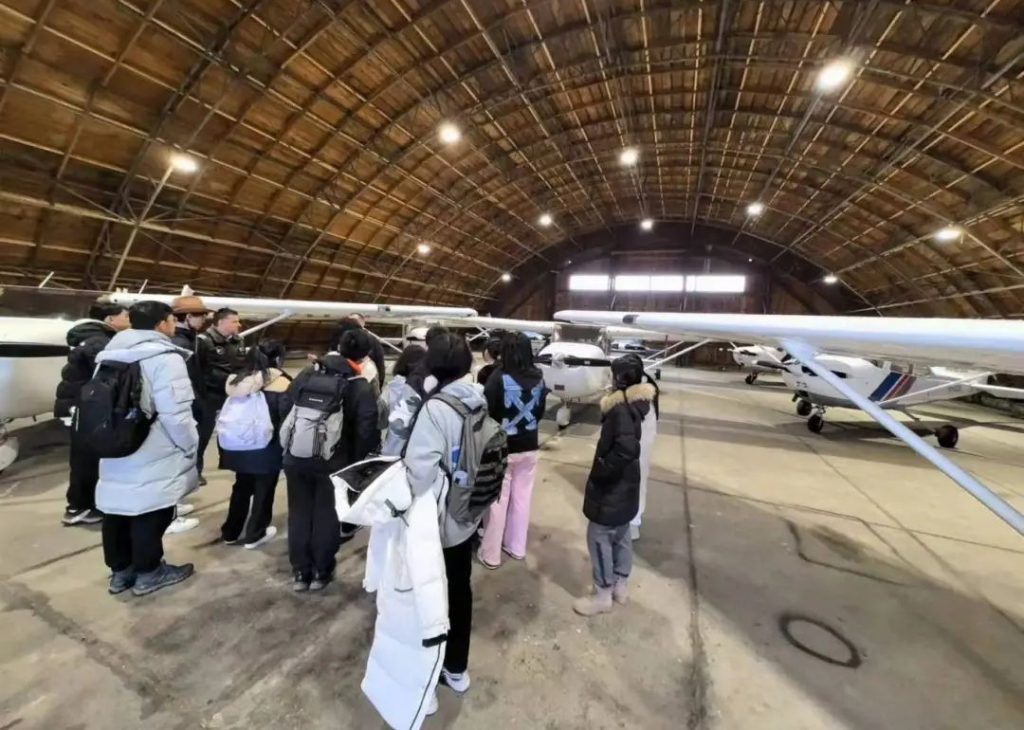
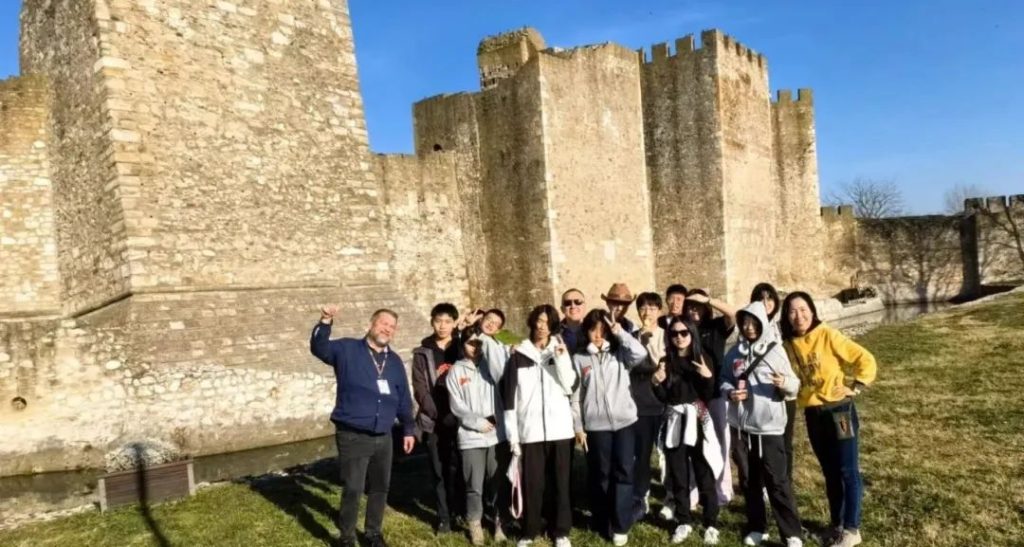
Day 4
We first came to the memorial site of the Chinese Embassy. Here, students silently laid flowers in memory of the diplomats and journalists killed during the NATO bombing in 1999. Standing in front of this site, we are touched by a profound emotion, not only for the innocent victims of mourning, but also for the value of peace. This memorial site is not only a witness to history, but also a hope for peace and friendship in the future.
Next, we visited the Tito Yugoslav Museum. This museum is dedicated to the history of the Socialist Federal Republic of Yugoslavia and its leader Josip Broz Tito. Here we learn about Tito’s political career, Yugoslavia’s role in World War II, and its non-confrontational stance during the Cold War. Through the visit, we gained a fuller understanding of the history of Yugoslavia and the influence of Tito.
Finally, we climbed the TV tower in Belgrade. Standing on the tower, we overlook the whole city and experience the unique blend of Belgrade’s history and modernity from this unique perspective. The TV tower itself is also a witness to history, having been destroyed during the war and later rebuilt, becoming a landmark of Belgrade and a symbol of national revival.
In the evening, we went to visit the Belgrade Fortress with Teacher Daisy, which was a unique historical tour. Located at the confluence of the Danube and Sava rivers, the Belgrade Fortress is not only a symbol of the city, but also a witness to its rich history.
Walking among the ancient walls and forts, we felt as if we had traveled back in time. Miss Daisy gave us a detailed history of the fort. The fortress has seen Belgrade rebuilt and fought many times from the Roman period to the Ottoman Empire and into the modern era. Every stone seems to carry the weight of history, and every corner is full of stories.
At night, the fortress looks even more mysterious and spectacular. We were given a guided tour of various parts of the fort, including the ancient observation tower, military installations and historical sites. Teacher Daisy also shared many legends and anecdotes about the fortress, which made this historical tour more vivid and interesting.
In addition, from the vantage point of the fortress, we were able to overlook downtown Belgrade and the winding river, a perspective that gave us a deep sense of the city’s strategic position and historical importance. The city lights at night and the reflections of the river make a beautiful picture.
The whole trip is not only a historical exploration, but also an emotional experience. Each location gives us a sense of the weight of history and inspires us to reflect on peace, progress and the common future of humanity. It was an unforgettable educational journey that profoundly affected each of us.
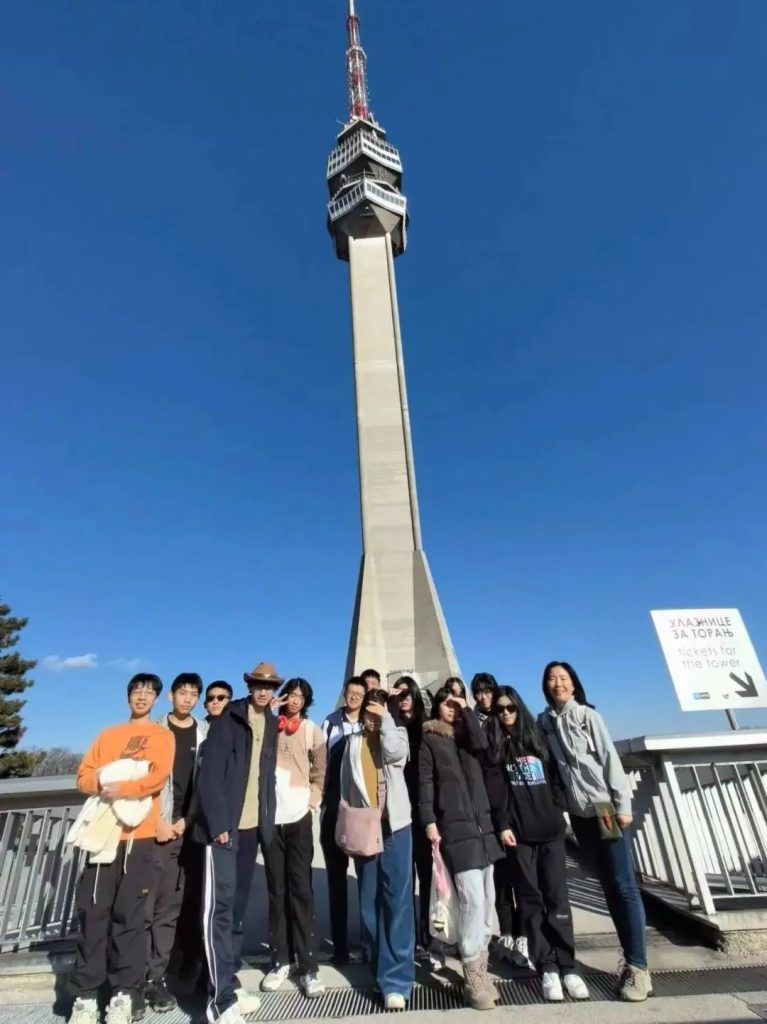
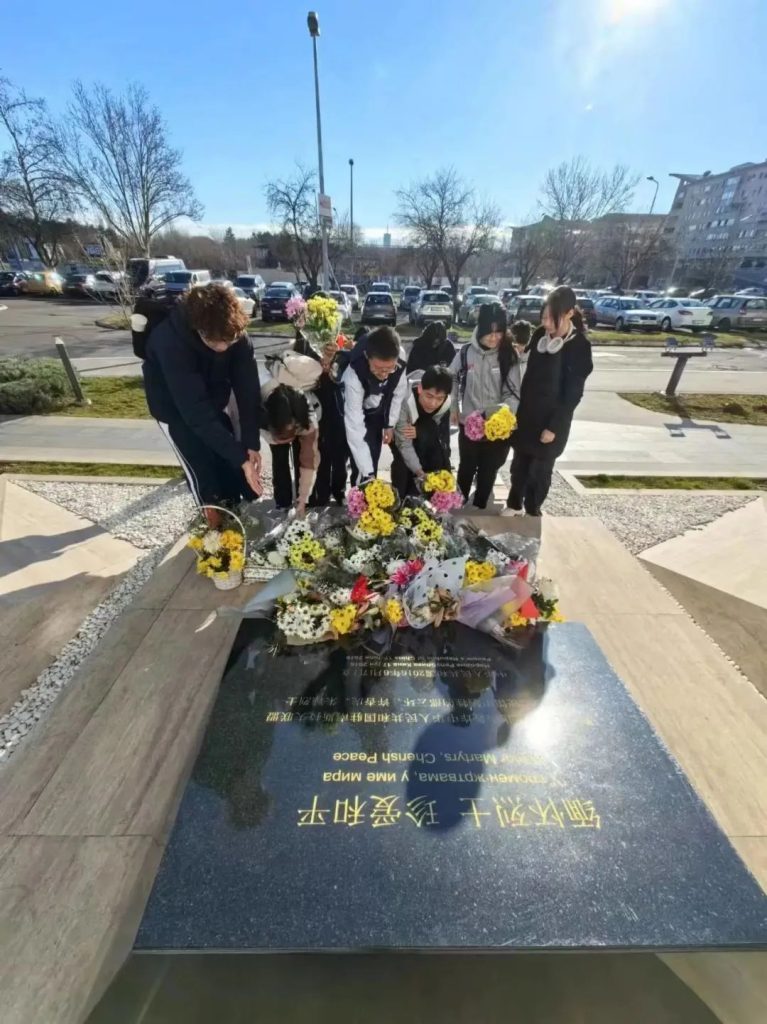
Day 5 Novi Sad
Our journey continues north to Novi Sad, Serbia’s second largest city. The city is famous for its diverse culture and rich historical sites. Our first destination is the magnificent fortress castle on the banks of the Danube, which is not only a historic symbol of the city, but also a great place to enjoy the beautiful scenery of the Danube.
Climbing up to the fortress, we were struck by what we saw. Situated high on the banks of the river, the castle offers excellent views over the whole of Novi Sad and the meandering Danube. With our guide, we learn about the historical background of the fortress, which has witnessed many historical changes and cultural interactions, from the Ottoman Empire to the Habsburg monarchy to modern Serbia.
After visiting the fortress, we experienced the local food culture. Novi Sad is famous for its cuisine, and we sampled the most authentic Serbian cuisine, including belevapi (meat skewers), Sarma (meat wrapped in cabbage) and traditional Serbian bread. Each dish is full of local specialties and delicious. While enjoying the food, we also had a cordial exchange with the local residents, and their warm hospitality made us deeply feel the friendliness and warmth of the Serbian people.
A day at Novi Sad is not only an exploration of the city’s history and culture, but also a taste and emotional journey. Every part of the city is full of stories and charm, which gives us a deeper understanding and affection for Serbia.
Day 6 NO POPOVIC Belgrade+Palace+Tesla
Walking around the city of Belgrade is a rare cultural experience. Our itinerary includes several important landmarks, each of which speaks volumes about the city’s history and culture.
First, we visited St. Sava’s Cathedral, one of the largest Orthodox churches in the world. Its magnificent architecture and exquisite interior are impressive. The frescoes and Mosaic art inside the church demonstrate the Orthodox religious tradition and artistic aesthetics. Standing in this church, we can feel the deep religious culture and history of Serbia.
Next, we come to the Royal Palace, which is the residence of the Serbian royal family and an important historical and cultural heritage site of the country. The architectural style of the palace is elegant and gorgeous, and the garden design is exquisite, showing the aristocratic culture and history of Serbia. Here we learn about the history of the royal family and the political background of Serbia, increasing our knowledge of the history of the country.
Finally, we visited the Nikola Tesla Museum. Tesla is Serbia’s most famous inventor and physicist, and many of his inventions have had a profound impact on modern technology. The museum displays Tesla’s personal belongings, invention prototypes and related literature, giving us a more intuitive understanding of the life and achievements of the scientific giant. Through the visit, we have a deeper understanding and respect for Tesla’s contribution and scientific spirit.
A walk through the city not only allowed us to appreciate the architectural beauty of Belgrade, but also gave us an insight into Serbia’s history, culture and technological development. This is a trip full of educational and cultural value.
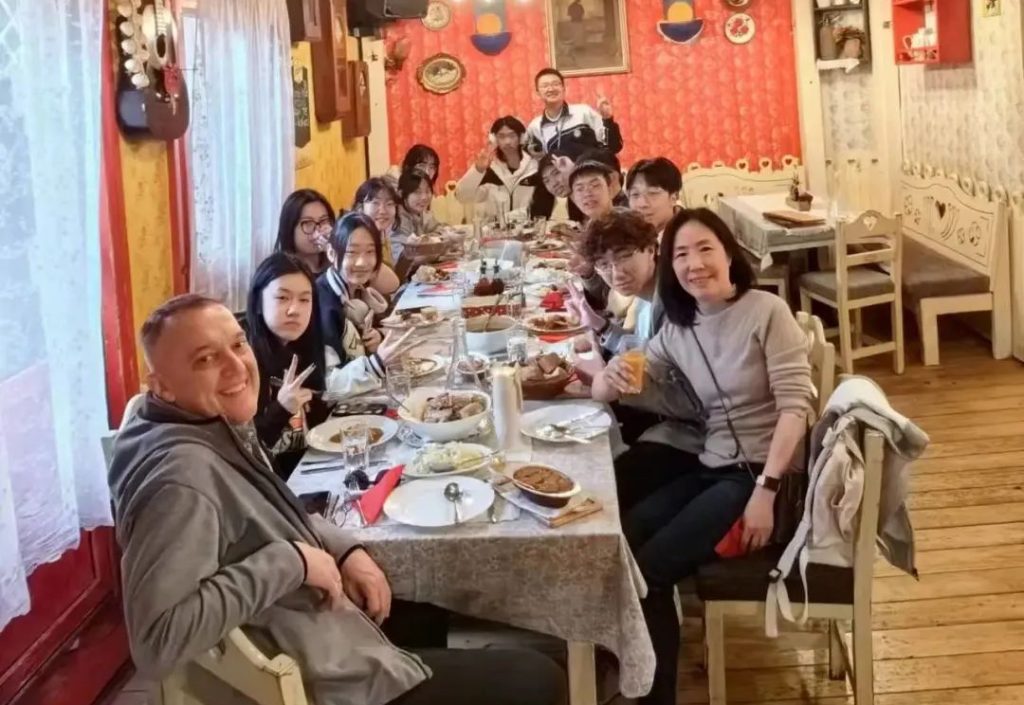
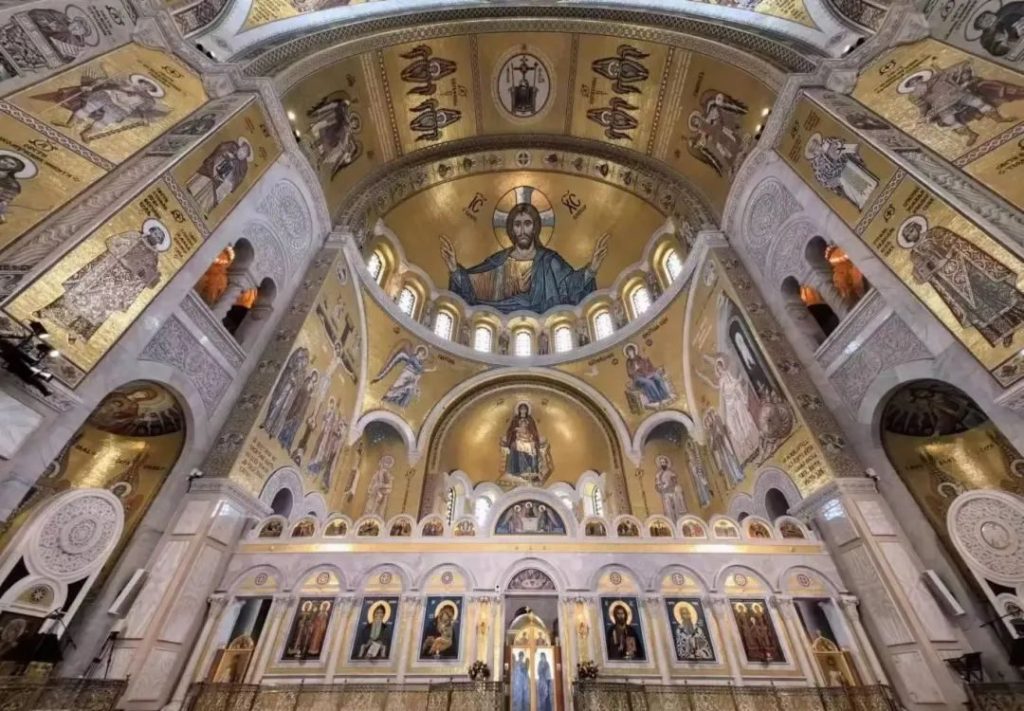
Day 7
Heading southeast, our journey brings us to Pozarevac, an area known for its historic forts and castles. The fort of Pozarevac is a valuable site that showcases the rich history of the region and gives us a unique insight into the importance of the region in history.
Pozarevac Fortress is located in a picturesque area with a beautiful surroundings and a rich history. The fortress has witnessed the changes of many eras, from the ancient Roman period to the Middle Ages to the modern era, and each period has left its unique mark here. Walking between the ancient walls of the fort, we seem to hear the echoes of history and feel the weight of time.
Then we went to another important historical site – Stevan Hristic. Although this area does not exist in the form of a museum, it is also an important historical site. The castle or fort of Stevan Hristic is equally rich in history, reflecting the importance of the area in military and cultural terms. Standing high in a castle or fort, we can not only enjoy the beauty of the surrounding nature, but also feel the depth and breadth of history.
The whole trip not only allowed us to enjoy the natural beauty of Serbia, but more importantly, let us have a deeper understanding of the history of the country. The forts and castles of Pozarevac and Stevan Hristic are an important part of Serbian history and provide us with a unique perspective on the country’s rich historical heritage.
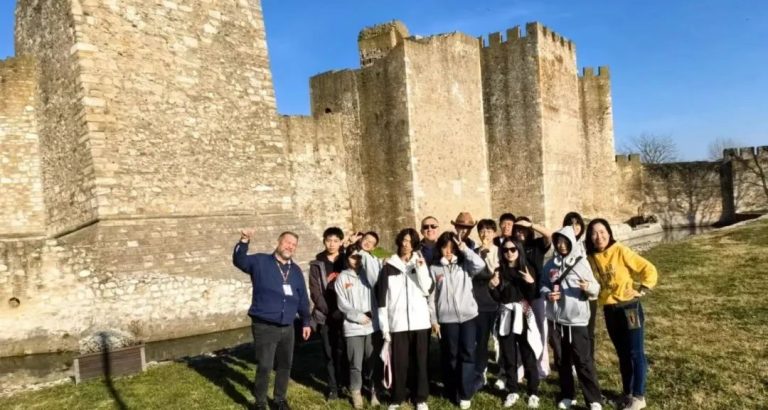
Day 8
On the last day of the tour, we visited the Belgrade Fortress again under the guidance of teacher Popovic. Although some of the students had already been there with Miss Daisy, the experience with a local was quite different. Teacher Popovic not only knows the history of the Belgrade fortress well, but his narration incorporates many personal memories and emotional colors about the city and the fortress, making the visit more vivid and meaningful.
We were guided by our teacher through every corner of the fort, listening to him tell the historical legends about the fort, the battle stories, and the historical changes witnessed by these ancient stone walls. Every stay and viewing is no longer just an appreciation of the historic sites, but also an understanding of the soul of the city. In Teacher Popovic’s narration, we can feel the life of the fortress in different historical periods and its special significance to the residents of Belgrade.
Besides visiting the Belgrade Fortress, my classmates and I also arranged special visits to the Museum of Science and Technology and the zoo.
In the science museum, we were deeply attracted by the various exhibits. It shows the development of science and technology from ancient times to modern times, including some early inventions and the latest scientific and technological achievements. In particular, the contributions of some Serbian scientists on display gave us a deeper understanding of the country’s efforts and achievements in the field of science and technology. As we walked through the museum, each exhibition area was full of surprises and new knowledge, which was not only a gain in knowledge, but also a feeling of the charm of science and technology.
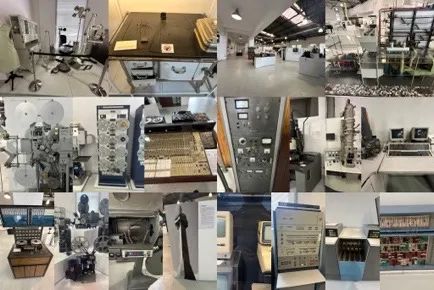
Then we went to the Belgrade Zoo. Animals from all over the world are gathered here, each with its own unique habits and characteristics. Walking in the zoo, we can not only observe these animals up close, but also understand the importance of animal protection. A visit to the zoo added a sense of ease and fun to our trip, as well as deeper reflection and respect for the natural ecology.
This last half-day trip was rich and meaningful, which not only deepened our understanding of Belgrade’s history and culture, but also broadened our horizons and gave us a deeper understanding of the progress of science and technology and the protection of natural ecology. It was an unforgettable journey of learning and discovery that gave us a more comprehensive and profound understanding of the country of Serbia.
It’s three o ‘clock in the afternoon, and our journey is coming to an end. Everyone gathered at the gate of the Hotel Capital to board the minibus to Belgrade airport. At that moment, we had both the sadness of leaving this beautiful city and the expectation of returning home.
Throughout the trip, we experienced numerous memorable moments: from visiting the historic fortress castle, to tasting authentic Serbian cuisine; From deep exchanges with locals, to adventures in science museums and zoos. These experiences have given us a more comprehensive and profound understanding of Serbia as a country, and have also enriched our emotions.
On the minibus to the airport, students shared highlights and experiences of the trip with each other. Although tired, everyone’s face was filled with satisfaction and joy.
After nearly a day’s turnover, we finally arrived at SCIE at more than 8 PM. The moment we got off the plane, we felt the warmth of our long-lost home. Although the body is tired, but the mind is full of harvest and joy. This trip to Serbia is not only a geographical migration, but also a spiritual and cognitive journey, which will remain in our memories forever.
- Article / Andy Shu

